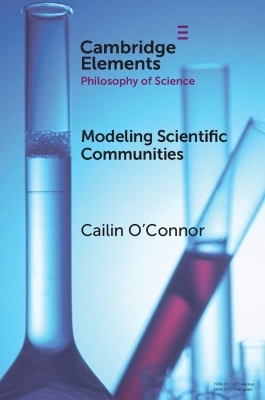
Modelling Scientific Communities
Seiten
2023
Cambridge University Press (Verlag)
978-1-009-35954-2 (ISBN)
Cambridge University Press (Verlag)
978-1-009-35954-2 (ISBN)
This Element will overview research using models to understand scientific practice. It argues that while these models are epistemically useful, the best way to employ most of them to understand and improve science is in combination with empirical methods and other sorts of theorizing.
This Element will overview research using models to understand scientific practice. Models are useful for reasoning about groups and processes that are complicated and distributed across time and space, i.e., those that are difficult to study using empirical methods alone. Science fits this picture. For this reason, it is no surprise that researchers have turned to models over the last few decades to study various features of science. The different sections of the element are mostly organized around different modeling approaches. The models described in this element sometimes yield take-aways that are straightforward, and at other times more nuanced. The Element ultimately argues that while these models are epistemically useful, the best way to employ most of them to understand and improve science is in combination with empirical methods and other sorts of theorizing.
This Element will overview research using models to understand scientific practice. Models are useful for reasoning about groups and processes that are complicated and distributed across time and space, i.e., those that are difficult to study using empirical methods alone. Science fits this picture. For this reason, it is no surprise that researchers have turned to models over the last few decades to study various features of science. The different sections of the element are mostly organized around different modeling approaches. The models described in this element sometimes yield take-aways that are straightforward, and at other times more nuanced. The Element ultimately argues that while these models are epistemically useful, the best way to employ most of them to understand and improve science is in combination with empirical methods and other sorts of theorizing.
1. Introduction; 2. The credit economy; 3. The natural selection of science; 4. Social networks and scientific knowledge; 5. Epistemic landscapes; 6. The replication crisis and methodological reform; 7. The replication crisis and methodological reform; Bibliography.
| Erscheinungsdatum | 12.12.2023 |
|---|---|
| Reihe/Serie | Elements in the Philosophy of Science |
| Zusatzinfo | Worked examples or Exercises |
| Verlagsort | Cambridge |
| Sprache | englisch |
| Gewicht | 149 g |
| Themenwelt | Naturwissenschaften |
| Betriebswirtschaft / Management ► Spezielle Betriebswirtschaftslehre ► Bankbetriebslehre | |
| Wirtschaft ► Volkswirtschaftslehre ► Makroökonomie | |
| ISBN-10 | 1-009-35954-1 / 1009359541 |
| ISBN-13 | 978-1-009-35954-2 / 9781009359542 |
| Zustand | Neuware |
| Haben Sie eine Frage zum Produkt? |
Mehr entdecken
aus dem Bereich
aus dem Bereich
warum unser Geld stirbt und wie Sie davon profitieren
Buch | Hardcover (2024)
FinanzBuch (Verlag)
CHF 41,95
denken und handeln wie ein professioneller Trader
Buch | Softcover (2023)
Vahlen, Franz (Verlag)
CHF 51,65


